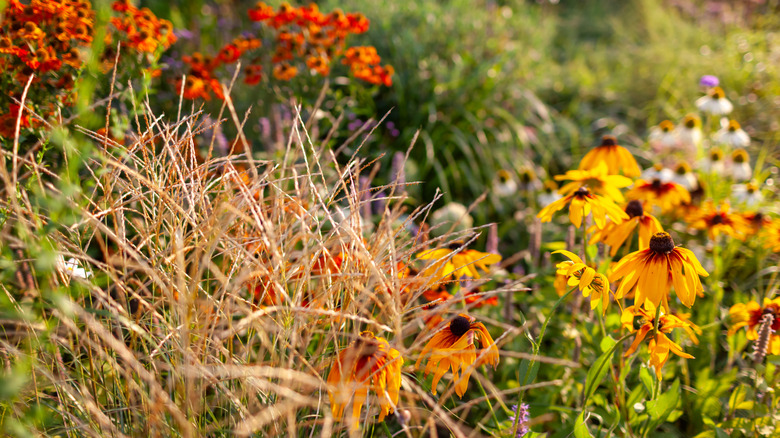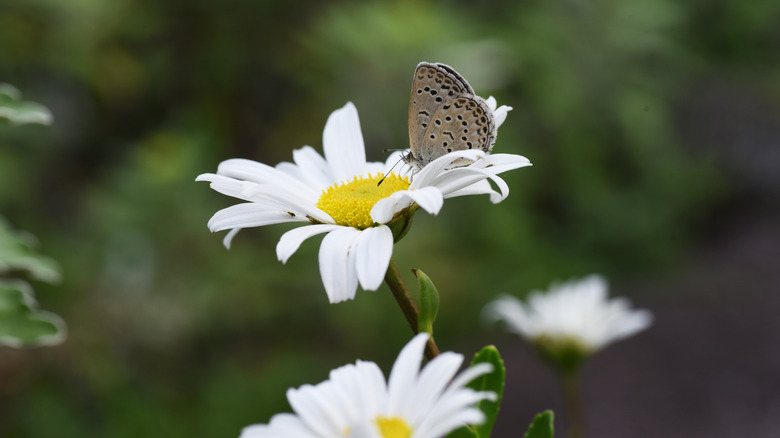The White Perennial Built For Fall That Pollinators Can't Resist
Planting perennials in your yard is a smart choice for gardeners who want reliable color year after year. With the right growing conditions, you can easily end up with a colorful variety of perennials that will never leave your garden once planted. Fall is an excellent time to plant perennials because the cooler weather helps them establish strong roots before winter sets in. If you're looking for a hardy perennial that can handle the season's cooler weather while still attracting bees and butterflies, the Nippon daisy (Nipponanthemum nipponicum)is a perfect choice. This bright and cheerful flower is part of the Asteraceae family and is a native of the coastal regions of Japan. Also known as the Montauk daisy, it provides blooms from late summer all the way up until the first hard frost.
Nippon daisies thrive in growing zones 5 to 9 and typically reach heights of 1.5 to 3 feet tall. They feature dark green leaves that are beautifully glossy, and lovely blooms that are 2 to 3 inches in diameter with white petals and yellow centers. Nippon daisies are very popular with pollinators, especially bees and butterflies. Choosing these daisies for your yard provides food well into fall, and is one of the important ways to bring more pollinators to your yard and garden. Nippon daisies are low maintenance and frequently used to create borders, rock gardens, and because they are familiar with coastal environments and tolerate salt spray well, they are great for coastal gardens too. Their versatility, low-maintenance, drought tolerance (once they are established), and ability to handle colder weather make them an excellent choice for most gardens.
How to plant, grow, and care for your Nippon daisies
Nippon daisies grow easily in full sun, and need at least 6 hours of direct sunlight each day. However, they can tolerate a little bit of shade in hot climates. These hardy perennials can handle a variety of soil types including loamy and sandy, as long as the soil is dry, and drains well. Well-draining soil helps to avoid root rot, a disease caused by too much dampness and water that Nippon daisies are prone to get.
Once planted, water the plant deeply so the soil settles and there is a good root-to-soil connection. Because it tolerates drought conditions so well, you likely won't need additional watering beyond natural rain unless your region is going through an extended dry period. If you notice the plants looking wilted, go ahead and water them and they should spring right back. You can avoid watering problems with your daisies by using this eco-friendly hack that helps you never over-water your garden plants again.
Nippons don't need a lot of fertilizing. Adding manure or compost once a year around the base of the plant or a slow-release fertilizer to poor soil will provide plenty of nutrients. Pruning needs are simple and can be done in the early spring. Cut back the stems 6 inches from the ground so the plants keep a nice, bushy look and remove dead flowers to keep the daisies looking and blooming their best. Once the daisies have new buds you should not do any more pruning beyond deadheading.

